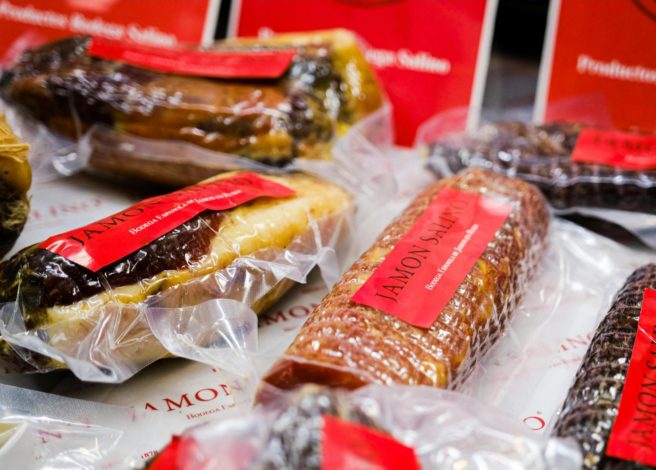At a Glance
- Film sealing offers flexible protection, creating air-tight, tamper-evident pouches that conform to product shape.
- It’s lightweight and efficient, often using less material than rigid containers and reducing transport costs.
- Barrier properties vary, so film structure must match product needs (moisture, oxygen, puncture resistance).
- Rigid packaging wins on rigidity and stackability, but film sealing excels in lower cost and sustainability — choice depends on use case.
From farm-fresh to funky in just days — that’s the fate of your homemade cheese storage solution, while the store-bought version somehow maintains its pristine condition for weeks. The secret? Welcome to the fascinating world of film sealing — a distinct packaging technology that’s been quietly transforming parts of our industry for decades.
This technology uses layered materials, special chemistry, and precise engineering. It helps keep products fresh, safe, and attractive. For food industry pros, knowing about film sealing is important. It affects shelf life, safety, how consumers see your products, and your profits.
With over 50 years in the fresh food packaging industry, we’ve seen the rise of all kinds of technologies. So, how does film sealing compare to “traditional” packaging like rigid plastic clamshells? Let’s take a deeper look at what’s really hiding beneath the seal.
What is Film Sealing?
In simple terms, film sealing is like giving your food product an airtight hug using heat and pressure. The process seals food with special multi-layer films. This creates a hermetic barrier. It’s like those vacuum bags that shrink your winter clothes to half their size. This application is often seen with fresh meats and cheeses. This method is very different from traditional rigid packaging, like clamshells. Clamshells may snap shut well, but they lack the same control over the atmosphere. That control over what gets in (or stays out) of the package is where film sealing flexes its technical muscles for certain food applications. To understand film sealing better, let’s see how it compares to traditional plastic packaging.
Film Sealing vs. Traditional Packaging
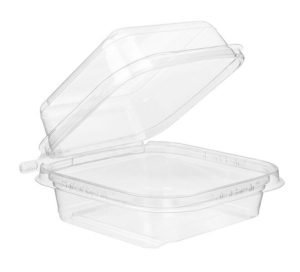 When you choose packaging solutions, it’s vital to understand how film sealing differs from traditional methods. This knowledge helps in making informed decisions.
When you choose packaging solutions, it’s vital to understand how film sealing differs from traditional methods. This knowledge helps in making informed decisions.
Traditional clamshell packaging is typically constructed from single-layer rigid materials, predominantly polyethylene terephthalate (PET). It gives great product visibility and structural protection. It uses mechanical closure instead of real hermetic seals. The manufacturing process is usually simpler. These packages are also easier to recycle because they’re made from a single material rather than multiple layers fused together. This streamlined design allows them to move through regular recycling systems without the need for separating components.
In contrast, film sealing systems are composed of multiple sophisticated layers, each with specific technical functions. That’s right — just like those mysterious bad boys in leather jackets in movies from the 80s, these seals contain layers. They provide exact control over the atmosphere inside the package. They also create airtight and watertight seals. These seals stop gases, liquids, and germs from passing through. These systems let you customize based on product respiration rates. They can also be designed for different barrier properties to meet various product needs.
Multi-Layer Film Architecture
It’s important to understand how each of these specific layers works. From an engineering view, film seals are complex. They have two to fifteen different functional layers. The number of layers depends on the application and performance needs. However, most film seals have three main components that are key to the technology:
- Skin Layer – The outermost structural component providing mechanical integrity, puncture resistance, and printability
- Barrier Layer – The engineered middle layer controlling gas transmission rates, moisture vapor transfer, and UV protection
- Sealant Layer – The food-contact layer specifically formulated to create the hermetic seal
Additional layers might include adhesives, tie layers, or specialized materials for enhanced performance, but these three primary layers handle the essential functions.
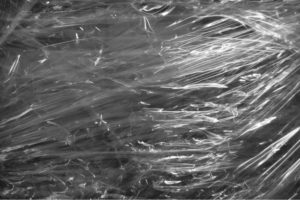 The sealant layer needs special attention. It’s the matchmaker of packaging, forming a vital bond with heat. This layer is usually made from polyethylene (PE), surlyn, or similar thermoplastic polymers. It melts at the right temperature to bond securely with any surface. Picking the right sealant is like choosing the right cooking temperature. If it’s too hot, you can ruin it. If it’s too cool, it won’t work at all. Engineers need to think about how well heat moves through the material. They also need to know how long to apply that heat (dwell time) and how evenly pressure is spread. This way, they can create a reliable seal every time.
The sealant layer needs special attention. It’s the matchmaker of packaging, forming a vital bond with heat. This layer is usually made from polyethylene (PE), surlyn, or similar thermoplastic polymers. It melts at the right temperature to bond securely with any surface. Picking the right sealant is like choosing the right cooking temperature. If it’s too hot, you can ruin it. If it’s too cool, it won’t work at all. Engineers need to think about how well heat moves through the material. They also need to know how long to apply that heat (dwell time) and how evenly pressure is spread. This way, they can create a reliable seal every time.
Advanced Atmosphere Control Technologies
The main technical benefit of film sealing systems is their ability to control the internal package atmosphere. This control is crucial for keeping products safe, compliant, and high quality.
Vacuum Packaging Specifications
Vacuum packaging is essentially putting your food product on an oxygen diet. Specialized equipment sucks the air out of the package before sealing it tight.
This oxygen eviction party shows great results. These products last 2-5 times longer than in packaging without oxygen deprivation. Also, fats are 3-10 times less likely to go rancid. No more mystery smells — something we all dread! Without oxygen, bacteria pause their tiny feast. This slows down their growth and activity significantly. As a bonus, removing all that air makes packages smaller and more compact — saving valuable space in shipping, storage, and display.
Modified Atmosphere Packaging (MAP) Engineering
While vacuum packaging removes air, MAP replaces it with something better — a custom climate for your food. Packages contain special gas mixtures, usually 75-80% carbon dioxide and 20-25% nitrogen. The industry calls this mix “beer gas.” It helps keep products fresh longer. Packaging engineers may add small amounts of other gases to solve specific preservation issues for specialized products. This method needs special equipment. You must mix gases, check their compositions, and create strong seals. This helps keep the atmosphere just right.
Oxygen Transmission Rate (OTR) Specifications
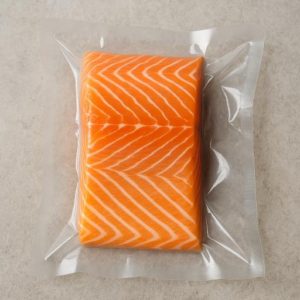 When selecting films, packagers must consider how much oxygen can pass through them — the Oxygen Transmission Rate (OTR). Regulatory rules often set these standards. For example, the FDA requires a minimum of 10,000 OTR for fresh seafood packaging. This unusual rule is in place because some products need controlled oxygen flow for safety and quality. Finding the right balance is key. If it’s too tight, the product might spoil. If it’s too loose, the shelf life can drop. Companies need to test their packaging in different conditions. This helps ensure they meet regulations and quality standards.
When selecting films, packagers must consider how much oxygen can pass through them — the Oxygen Transmission Rate (OTR). Regulatory rules often set these standards. For example, the FDA requires a minimum of 10,000 OTR for fresh seafood packaging. This unusual rule is in place because some products need controlled oxygen flow for safety and quality. Finding the right balance is key. If it’s too tight, the product might spoil. If it’s too loose, the shelf life can drop. Companies need to test their packaging in different conditions. This helps ensure they meet regulations and quality standards.
Strategic Business Applications Beyond Preservation
Film sealing technologies have many benefits beyond just extending shelf life. These advantages should be considered when developing your packaging strategy.
Safety & Compliance
- Creates verifiable critical control points for HACCP programs
- Provides tamper evidence for enhanced food defense
- Enables seal integrity verification throughout the supply chain
Marketing Benefits
- Offers high-clarity product visibility with premium presentation
- Supports higher price positioning through quality perception
- Creates differentiated shelf presence with customizable dimensions
Supply Chain Advantages
- Reduces returns through extended quality maintenance
- Optimizes storage and shipping space utilization
- Potential for automation and labor reduction at scale
Sustainability Considerations and Market Realities
The challenge is that multi-layer film structures present significant recyclability hurdles in current waste management systems.
Recycling Limitations
- Most municipal facilities lack capabilities to process these materials
- Food contamination complicates recycling efforts
Industry Solutions
- Material reduction: Achieving 15-30% less material use
- Mono-material research: Developing single-polymer alternatives
- Advanced recycling: Investing in chemical processing technologies
- Bio-based options: Creating industrially compostable alternatives
Ultimately, neither film sealing nor traditional packaging offers perfect sustainability. The optimal choice depends on specific product needs, distribution channels, and company objectives.
Film Sealing Applications Beyond Meat
Film sealing technology extends well beyond meat packaging. Different products require specially tailored film solutions, such as cheese, produce, and prepared foods. Let’s peel back the seal into the intricacies of these solutions.
Cheese Packaging
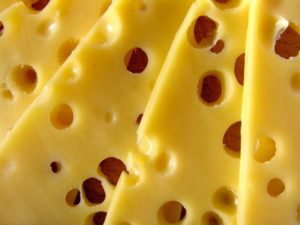 Different cheese varieties have unique packaging needs. Some hard cheeses use barrier films to keep oxygen out. In contrast, Swiss cheese works better in packaging that lets gases escape due to its natural off-gassing. CO₂ produced during the aging process is actually why Swiss cheese has holes!
Different cheese varieties have unique packaging needs. Some hard cheeses use barrier films to keep oxygen out. In contrast, Swiss cheese works better in packaging that lets gases escape due to its natural off-gassing. CO₂ produced during the aging process is actually why Swiss cheese has holes!
Produce
Fruits and vegetables are often sealed with special films. These films let them breathe while keeping them fresh for a longer time.
Prepared Foods
Ready-to-eat meals often use film sealing with a modified atmosphere. This helps keep them fresh, tasty, and good-looking until you eat them.
Picking Your Packaging Partner
Choosing between film sealing and traditional packaging is like picking a Swiss Army knife or a chef’s knife. There’s no clear winner. Each excels in different situations. The right choice depends on your specific product, business goals, and market position.
Smart packaging decisions require a big-picture view. Consider what you’re packaging, how it travels, and what customers expect. Also, think about regulatory demands and your sustainability goals. Armed with an understanding of film sealing’s capabilities and limitations, you can choose the right tool for the job and avoid that sinking feeling when you realize you brought a spoon to a fork fight.
Are you interested in learning more about packaging solutions and how they work? Visit our Learning Center today! Have any questions? Don’t hesitate to reach out! We’re here to help.

